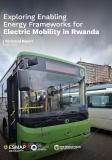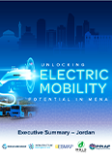Publications

The deep economic transformation of India will be accompanied by rapid growth in passenger and freight demand and require a transition to more sustainable transport solutions. In this context, electric mobility (e-mobility) is anticipated to play a major role in India’s transport transition during this decade. The Government of India has been steadily moving toward a “shared, connected and electric” mobility ecosystem to achieve its stated goals on emissions reductions, energy security and industrial development. It is doing so through wide-ranging policy and regulatory measures to encourage EV (Electric Vehicles) adoption, creation of public charging infrastructure and incentivizing domestic EV and battery manufacturing facilities. Nonetheless, from a market penetration perspective, as of 2021, India remains in its early phase of adoption, compared to its ambitious targets. So how to accelerate this transition and move from a 1% sale penetration to a 30% penetration faster? what levers can the government at different levels activate to achieve higher levels of penetration considering the different business models at play? what financial instruments to leverage? As part of our cooperation with NITI Aayog, our World Bank and IFC team, together with Steer Group and UITP, outlined scenarios, identified measures and quantified the impact of such measures. This summary report presents the key findings of this work and identifies solutions to accelerate such uptake towards greener mobility.
World Bank. 2022. Electric Mobility Market Assessment, Business Model and Action Plan in India. Washington, DC. © World Bank. https://openknowledge.worldbank.org/handle/10986/37898 License: CC BY 3.0 IGO.



